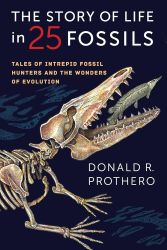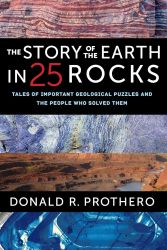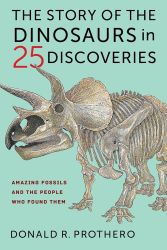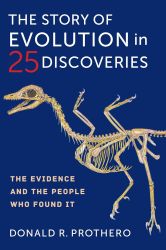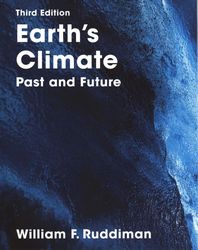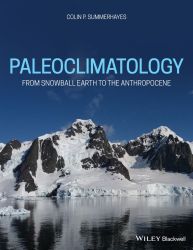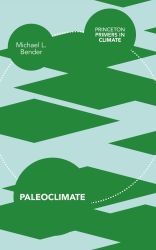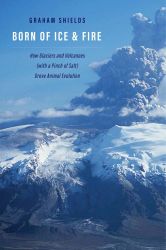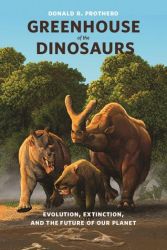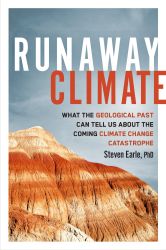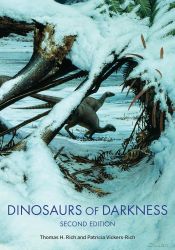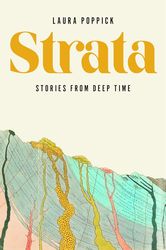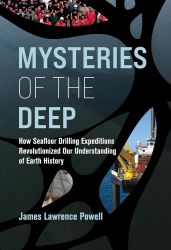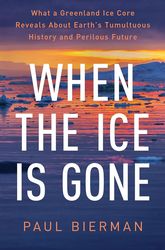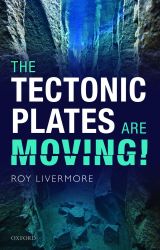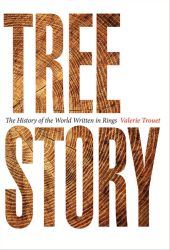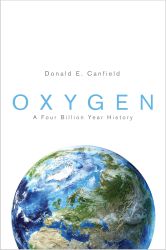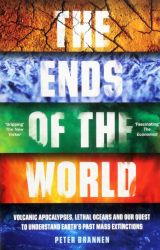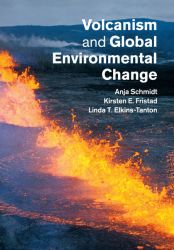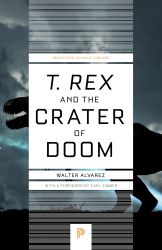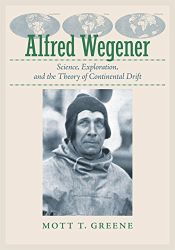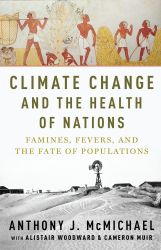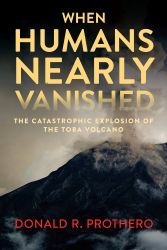7-minute read
keywords: earth sciences, history of science, paleoclimatology
This is the fifth instalment in what can unofficially be dubbed the 25 Discoveries series by palaeontologist and geologist Donald R. Prothero. After four previous books on fossils, rocks, dinosaurs, and evolution—I reviewed the last three (mostly) positively—Prothero now turns to palaeoclimatology. A chronology with character, this book takes the reader through 4.5 billion years (Ga) of Earth’s changing climate and its impact on life, while explaining how we know what we know.
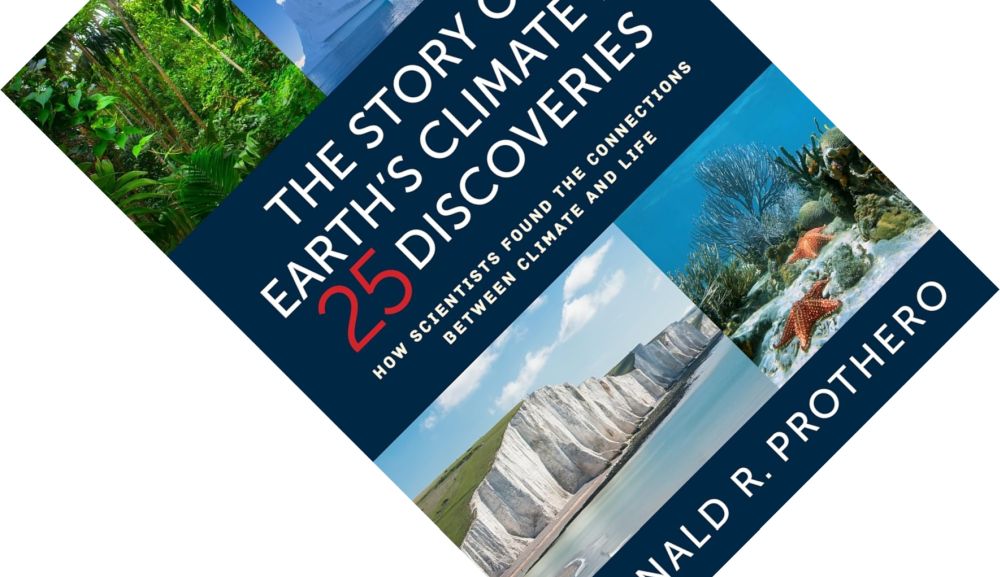
The Story of Earth’s Climate in 25 Discoveries: How Scientists Found the Connections Between Climate and Life, written by Donald R. Prothero, published by Columbia University Press in March 2024 (hardback, 466 pages)
This book flows from Prothero’s experience teaching about Earth systems and climate change. After browsing some of the books I have on the subject, I noticed that the structure deviates somewhat from others. Whereas Ruddiman’s Earth’s Climate focuses on the underlying concepts, and Summerhayes’s Paleoclimatology follows a 200-year chronology of the discipline of palaeoclimatology, Prothero’s approach hews much closer to Bender’s primer Paleoclimate in following a strict chronology of Earth’s climate. More than a primer, though, it is generously padded out with relevant material to make for a chunky book.
One consequence of the coursework on which Prothero draws is that he starts with four cosmology- and astronomy-themed chapters that he admits are not strictly about climate, such as the formation of stars, solar systems, and our sun and moon. With the literal substrate of our planet in place, there follows a 4.5-Ga-chronology in 21 chapters. For those who have read other popular works on this topic, there are familiar periods such the Huronian Snowball Earth episodes 2.5–2.2 Ga ago, the ice-age worlds of the Carboniferous 359–299 million years (Ma) ago when elevated oxygen levels allowed insects to grow nightmarishly large and a significant chunk of the world’s fossil fuel reserves were formed, or the proverbial greenhouse of the dinosaurs 145–66 Ma ago (this referencing Prothero’s book on the Cretaceous hothouse climate). But there is also attention for events that have rarely or only recently been discussed in popular works. An example of the former is the Carnian Pluvial episode, a strange 2 Ma interval of high humidity and extreme rainfall 234–232 Ma ago. An example of the latter is the Paleocene-Eocene Thermal Maximum ~55.8 Ma ago when atmospheric carbon dioxide levels and temperatures spiked. There is increasing interest in this interval as a past analogue of what is in store for our near future if humans do not rein in greenhouse gas emissions.
“there is […] attention for [climatic] events that have rarely or only recently been discussed in popular works.”
An important goal for Prothero is to explain how we know what we know so that readers understand how the climate works and why it changes. As such, much attention is given to the numerous lines of evidence on which palaeoclimatology draws. The fossils that show Greenland was once carpeted by lush forests while Antarctica was the stomping ground of dinosaurs. The stratigraphical evidence that tells stories of past ice ages by way of dropstones, erratics, and glacial till deposits. The fossil riverbeds in today’s deserts. The cyclical climate patterns revealed by repeating strata with obscure names such as cyclothems and varves. The palaeoclimatological archives contained in deep-sea sediment cores and Arctic ice cores. The numerous lines of evidence for plate tectonics. The geochemical evidence showing past changes in the composition of the atmosphere. The importance of microfossils, etc., etc. Prothero provides plenty of background material for the reader not schooled in geology and palaeontology. The only notable omission here is tree rings that are only mentioned in passing; unfortunate, as the story of dendrochronology is fascinating.
A secondary aim of this book is to show how life and climate have interacted with each other. Though some examples are given of life shaping the climate (e.g. the oxygenation of our atmosphere), the interactions mostly run the other way with Prothero prominently discussing the big five mass extinctions. These often resulted from rapid changes to Earth’s oceans and atmosphere, with episodes of massive volcanism frequently the likely kill switch. Wait, all of them? Some readers might be surprised that, when it comes to the end-Cretaceous mass extinction, Prothero is critical of the impact of the impact. Once you take a step back from the non-avian dinosaurs and note how other terrestrial groups were not particularly affected while the picture for marine groups is mixed, the story becomes more complicated. During his career, Prothero has been witness to the long and often lively debate over the role played by the massive volcanism that laid down the Deccan Traps in today’s India. In his opinion, this idea is less fringe than some would have it. “If the impact had any real effect at all, it was the coup de grâce for already terrible conditions in the Late Cretaceous” (p. 287).
“An important goal for Prothero is to explain how we know what we know […] As such, much attention is given to the numerous lines of evidence on which palaeoclimatology draws.”
Compared to the previous three books in the 25 Discoveries series that I reviewed, the role of the discoverers takes more of a backseat this time. The clue seems to be in the book’s subtitle: we have moved from “the people who found/solved them” to How Scientists Found the Connections Between Climate and Life. By now, there is some unavoidable repetition: researchers such as Alfred Wegener or James Croll’s underappreciated contribution to the ideas of Milutin Milankovic have featured before. Beyond that, the coverage is a bit spotty. There are, for instance, nice biographical sketches of geologist Alfred Fischer, who studied cyclical climate patterns, and palaeontologist Mary Dawson, who led Arctic fieldwork that taught us more about the climate of the lower Eocene, 56–48 Ma ago. Various others, however, get little more than a brief mention.
This brings me to some criticism. The foremost complaint I have is that, though I approve of Prothero’s desire to include material on the formation of stars and planets, this should have been condensed into a single chapter. I am not convinced we needed four chapters that touch on astronomical arcana such as the Fermi paradox, Drake equation, Kardashev scale, or the Hertzsprung–Russell diagram. This space could have been used to include more biographical sketches, or to flesh out e.g. the final chapter where he now rather hurriedly tries to convince the reader why current climate change has the human fingerprint all over it. I think the balance of the rest of the book is good: coverage of a large topic such as the impact of climate on human civilizations is appropriately limited given the vast scope of time considered here. I like that Prothero inserts some personal opinion while mostly managing to keep his tangents contained (there is e.g. only a brief mention of his hobby horse, the Toba eruption). Occasionally he slips a bit, such as a three-page listing of moon deities and other pre-scientific ideas, a section on how Carl Sagan was shunned and ridiculed for his science communication efforts, or a long list of unexpected discoveries to come out of basic or exploratory research (and Prothero’s ire at such research not being valued). Beyond this, my other gripes are minor nitpicks. There are some conversion errors in metrics and he does not always credit (palaeo)artists in figure legends (for instance notably omitting Charles R. Knight on p. 263). Lastly, as before, quite a few figures were designed with colour reproduction in mind and do not really work when printed in greyscale, though I hasten to add that several others have been suitably redrawn.
Above criticism notwithstanding, I think Prothero succeeds in educating the reader about Earth’s past climate. The book is informative and quite long but remains accessible and interesting. The attention given to mass extinctions seems appropriate given the close link to climatic changes. Prothero is not afraid to insert personal opinions in places, making this a palaeoclimatology chronology with character.
Disclosure: The publisher provided a review copy of this book. The opinion expressed here is my own, however.
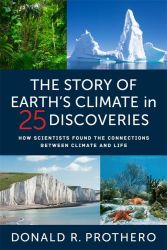 The Story of Earth’s Climate in 25 Discoveries
The Story of Earth’s Climate in 25 Discoveries
Other recommended books mentioned in this review:
__________________________________________________________________
__________________________________________________________________
__________________________________________________________________
__________________________________________________________________
__________________________________________________________________
__________________________________________________________________
__________________________________________________________________
__________________________________________________________________

